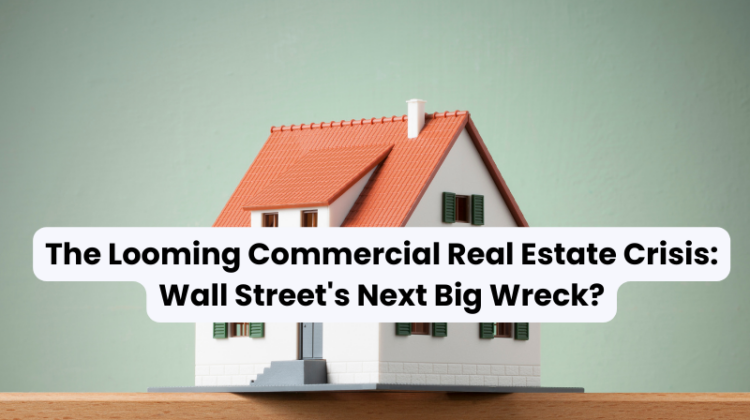
The pandemic-driven shift to remote work has severely damaged the commercial real estate sector, especially office and retail properties.
Property owners and their lenders face a potential crisis as leases expire in the coming years.
Federal Reserve Chair Jerome Powell’s recent remarks about anticipated bank failures linked to faltering commercial real estate have sent shockwaves through the financial world.
________________________________________________________________________
- Soaring office vacancies post-pandemic put pressure on property owners and lenders.
- Fed Chair Powell warns of potential bank failures linked to soured commercial real estate loans.
- Shift to remote/hybrid work models forces rethinking of office space demand and urban planning.
________________________________________________________________________
The Looming Commercial Real Estate Crisis: Wall Street’s Next Big Wreck?
The Office Vacancy Woes
Office vacancy rates have skyrocketed post-pandemic, reaching a record high of 13.2% in Q3 2023, according to CoStar data cited by the Financial Stability Oversight Council (FSOC).
This marks a massive 370 basis point increase from pre-pandemic levels.
The “reset in office demand has rocked U.S. markets,” notes CoStar analyst Phil Mobley.
Banks and Property Owners Under Pressure
With typical commercial leases spanning 3-5 years, the clock is ticking for financial sector owners and their creditors.
Delinquency rates for commercial mortgage-backed securities (CMBS) are rising, although still below peaks during the pandemic and 2008 financial crisis.
Private equity firm KKR’s Real Estate Finance Trust, which invests in commercial mortgages, saw its stock plummet 25% in early February due to an office loan loss that forced a dividend cut – a sign of things to come.
Powell’s Stark Warning
In his testimony to the Senate Banking Committee, Powell warned of impending bank failures, especially among smaller and medium-sized banks exposed to commercial real estate loans.
He deemed it a “manageable” issue for larger banks but a pressing problem that “we’ll be working on for years.”
A Slow-Motion Train Wreck?
While some investors view Powell’s comments as oversimplified, there’s consensus that commercial real estate woes won’t cause a sudden liquidity crisis like Silicon Valley Bank’s failure.
Instead, it’s described as a “slow-moving train wreck” that allows time for asset repricing and capital-raising.
Short sellers are already positioning to profit from miscalculated risks at specific REITs with inflated valuations that face impending reevaluations as interest rates rise and rent growth lags.
Macroeconomic Implications
Beyond potential bank failures, the lasting impacts of decreased office and retail demand on urban planning, construction, and land use may be the most significant economic challenges.
“We’re not going to see a lot of commercial construction in the economy for a decade or two,” warns economist Daniel Alpert, calling it a “big negative on a macro level.”
Construction and land development loans have begun tapering off their pandemic recovery surge.
A Silver Lining for Cities?
However, some urban experts see opportunities in repurposing vacant office spaces and redesigning downtown areas.
The pandemic accelerated pre-existing trends of increased remote work and a shift toward localized spending in residential neighborhoods.
As hybrid setups look to become a permanent reality, with 28% of paid work days being remote as of February 2023, cities can reinvent themselves around this “new normal.”
The looming commercial real estate crisis poses risks for banks and property owners in the short term.
But it also presents a catalyst for long-overdue urban evolution to match changing workplace dynamics – an evolution that could ultimately breathe new life into city cores.

Leave a Reply